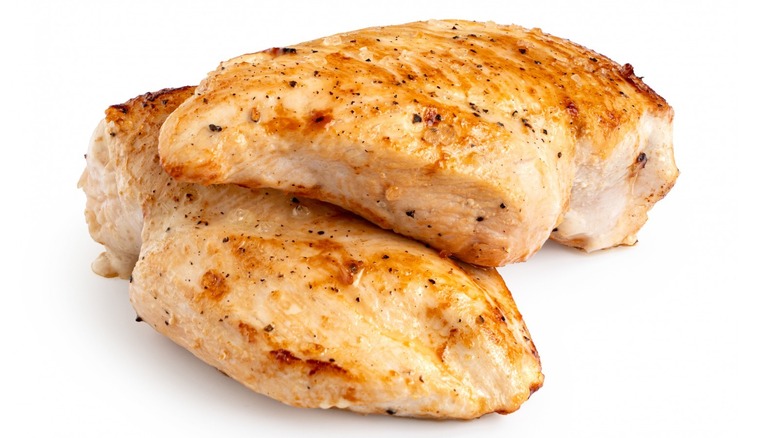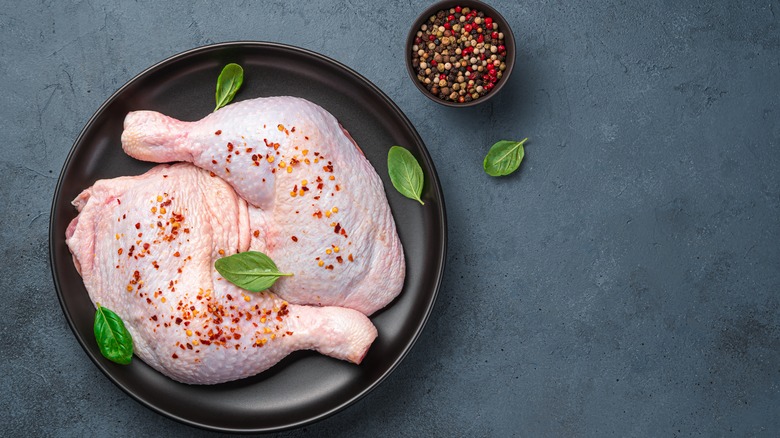This Is Exactly Why Your Chicken Is So Watery
There's no way around the fact that poultry contains water, but there are some ways to minimize the moisture in your chicken while cooking. According to the USDA Food Safety and Inspection Service, the meat's muscle, which is what's consumed when chicken is prepared, is about 65-70% water when raw depending on the specific type. For example, a whole raw chicken contains 66% of water, while a cooked whole chicken holds 60%.
Per Fox17, up to 15% broth can be added to chicken, which increases the amount of naturally occurring water. In a 2014 experiment, the site tested a pack of Walmart thin chicken, which was sold as if it was 1.82 pounds but actually weighed 1.59 pounds after the water was drained. Though many blame the brands for adding moisture to increase the price, Walmart denies this, stating that consumers enjoy chicken that contains broth due to its tenderness. With all the natural water and added broth that comes with poultry, you must take extra care while cooking to not create a watery product.
Your pan is probably too small
If your pan is full of water after preparing chicken, you're likely making a few mistakes. According to AUT culinary arts senior lecturer Alan Brown, watery chicken usually indicates that the pan is too small for the amount of meat being cooked (via Stuff). When the pan is overloaded, it causes the meat to cook at a lower temperature, which can cause moisture leakage, because the chicken never properly seals. "You're going to [cook the chicken in] one, two, three, four loads. You can only cook what the pan can hold," Brown said. In addition, adding salt to the pan can further stop moisture from leaking.
Per Pro Family Chef, the maximum amount of water your chicken should release is three tablespoons. After that, you'll want to double check your cooking and preparation methods. In addition to cooking your poultry in several batches, it's important to practice proper thawing and drying the chicken before placing it in the pan.

